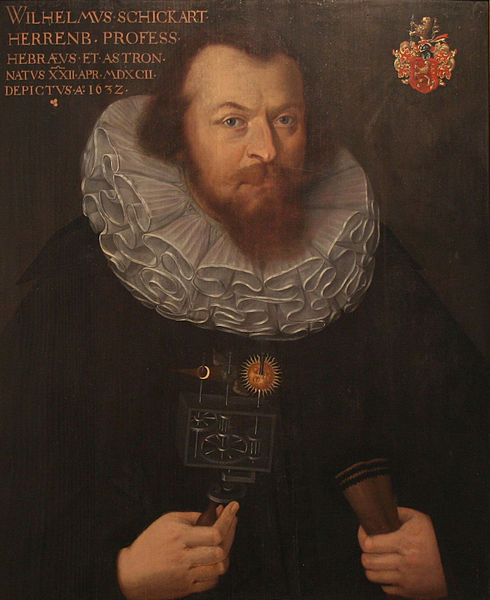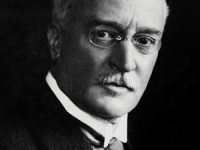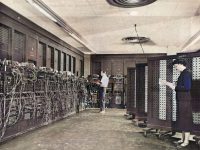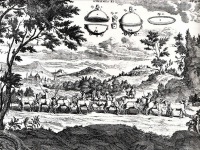
Wilhelm Schickard (1592-1635)
On October 23, 1635, German astronomer and mathematician Wilhelm Schickard, who constructed the very first mechanical calculator, passed away. His famous calculator was able to perform additions and subtractions. For more complicated operations, it provided so-called Napier bones, named after the Scottish mathematician John Napier,[1] who came up with the idea of logarithms. Although it is widely believed that the first mechanical calculating device was created by the French mathematician Blaise Pascal in 1642.[2] However, that distinction actually belongs to Wilhelm Schickard.
Early Years and University Studies
Born in Herrenberg, Germany, on April 22, 1592, Wilhelm Schickard was a brilliant student. Little is known about his early life. In 1611 he obtained a master’s degree at the University of Tübingen and then studied theology. From 1613 he was vicar at several places in Württemberg until he was appointed deacon in Nürtingen in 1614. Johannes Kepler, who had come to Tübingen to defend his mother in a witch trial, met him there in 1617. For Kepler’s work Harmonice mundi he made several copper engravings and woodcuts.[3]
Professor of Hebrew in Tübingen
In 1619 he was appointed professor of Hebrew at the University of Tübingen. In his teaching activities, he looked for simple methods to make learning easier for his students. Thus he created the Rota Hebræa, a representation of the Hebrew conjugation in the form of two rotating discs which are placed on top of each other and allow the respective forms to appear in windows. To study the Hebrew language, he created the Horologium Hebræum, the Hebrew clock, a textbook of Hebrew in 24 chapters, each to be learned in one hour. This book was Schickard’s best-known and was reprinted repeatedly until 1731. In 1627 he wrote a textbook for learning Hebrew in German, the Hebrew Funnel.
Astronomy requires Calculations
In addition to his teaching Hebrew, he was involved in astronomy. In 1623 he invented an astroscopium, a cone made of paper inside which the starry sky was depicted. Among other things, he developed a theory of the moon’s orbit, which provided the most accurate ephemeris of his time. He was the first to determine meteor orbits from simultaneous observations from different locations. While toiling over the many tedious calculations necessary in astronomy work, Schickard’s thoughts turned to the notion of mechanically performing mathematical calculations. Although the discovery of logarithms and logarithmic tables by John Napier (1550-1617) several years earlier had greatly simplified the process of multiplication and division, Schickard sought to develop a calculating machine to completely automate these functions.
Schickard’s Calculating Machine
In 1623, Schickard finally succeeded in building a mechanical device which could perform additions and subtractions. On September 20, 1623, he wrote in a letter to Johannes Kepler as follows:
“What you have done by calculation I have just tried to do by way of mechanics. I have conceived a machine consisting of eleven complete and six incomplete sprocket wheels; it calculates instantaneously and automatically from given numbers, as it adds, subtracts, multiplies and divides. You would enjoy to see how the machine accumulates and transports spontaneously a ten or a hundred to the left and, vice-versa, how it does the opposite if it is subtracting”
Schickard’s letter also mentions that the first machine to be built by a professional, a clockmaker named Johann Pfister, was destroyed in a fire while still incomplete. Schickard abandoned his project soon after. However, in the 1950s, scholars who were collecting the works of Kepler found, tucked into a book, Schickard’s original drawings of his device. This made it possible for Professor Bruno Baron von Freytag Loringhoff of the University of Tübingen to reconstruct Schickard’s calculator. Even though Wilhelm Schickard designed his mechanical calculator twenty years earlier, Pascal is still the inventor of the mechanical calculator because the drawings of Schickard’s calculating clock described a machine that was neither complete nor fully usable.
Further Research in Astronomy
From 1624 Schickard began on his travels through Württemberg as a school supervisor for the Latin schools to measure the country again. So that others could support him, he wrote an instruction in 1629 on how to make artificial land tables. He used the method of geodetic triangulation, which Willebrord Snell had invented a few years earlier. In 1631 the astronomy professor Michael Mästlin died and Schickard was appointed as his successor. He gave the astronomical lectures from now on. One of his most important works concerned the theory of lunar motion. In 1631 he published the Ephemeris Lunaris to calculate the moon’s orbit, with which one could graphically determine the moon’s position in the sky at any time. He was a convinced supporter of the heliocentric system and invented the first hand planetarium for his depiction, which is depicted on his portrait of 1631.
Later Years and Death
After the Battle of Nördlingen in 1634, the imperial troops occupied Tübingen and the plague came with them. In the autumn of 1634 Schickard’s mother died of mistreatment by soldiers, then his wife and three daughters died of the plague, leaving only his nine-year-old son. Schickard, who himself fell ill with the plague at the turn of the year and recovered, managed to come to terms with the occupying forces. On behalf of Count Gronsfeld, who was interested in his mathematical and even more in his geodetic work, he carried out surveys in the Stuttgart-Herrenberg-Tübingen area and in the Sinzheim-Bruchsal-Pforzheim area from February to July 1635. In mid-October he fell ill again, died on 23 October 1635 and was buried the following day.
Wilhelm Schickard Schule, Inventor of the First Mechanical Calculator | Who is Wilhelm Schickard?, [8]
References and Further Reading:
- [1] John Napier and his Napier Bones, SciHi Blog
- [2] It is not Certain that Everything is Uncertain – Blaise Pascal’s Thoughts, SciHi Blog, 19.06.2012
- [3] And Kepler Has His Own Opera – Kepler’s 3rd Planetary Law, SciHi Blog, 15.05.2012
- [4] O’Connor, John J.; Robertson, Edmund F., “Wilhelm Schickard“, MacTutor History of Mathematics archive, University of St Andrews.
- [5] Wilhelm Schickard at the University of Tübingen
- [6] Wilhelm Schickard’s Calculating Clock
- [7] Wilhelm Schickard at Wikidata
- [8] Wilhelm Schickard Schule, Inventor of the First Mechanical Calculator | Who is Wilhelm Schickard?, Learn Your WORLD @ youtube
- [9] Timeline of 17th century German Inventors, via Wikidata and DBpedia





